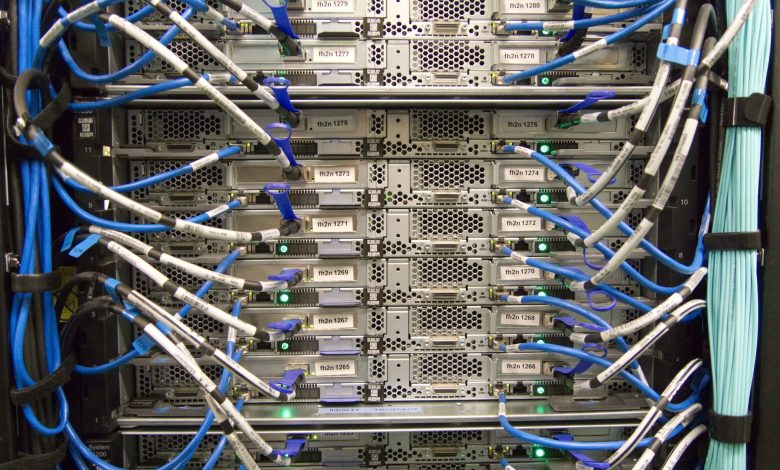Basic knowledge and tips on data center cabling

Fiber optic cables are characterized by high speed, high capacity, and high performance. These advantages make them the first choice for cabling data centers around the world, applying to both structured cabling and Top of Rack (ToR) cabling. The copper cable also plays an important role in today’s data center infrastructures. How to optimize the deployment of these network cables in data centers to avoid unnecessary losses and problems? Here are some essential concepts and tips.
Data center cabling standards are intended to ensure safety and lay the groundwork for building an integrated infrastructure. At the same time, they provide guidelines for maintaining high cable performance over the years. The cabling of data centers is regulated by a series of standards, the most common are the following:
Data Center Cabling Design Tips
Basic data center infrastructure planning is essential before cabling deployment begins.
Structured Cabling – Cabling runs and connections need to be planned for optimal data center cabling management. Compared to traditional point-to-point cabling, structured cabling requires the creation of the Main Distribution Area (MDA) and Horizontal Distribution Areas (HDA), as well as the use of two-tier racks. Posts for more efficient cable access and management.
Choosing the Right Cabling Solution – UTP copper cabling is typically deployed in today’s data centers, however, the need to support today’s and future higher speed systems is resulting in increased fiber installations. Fiber optic cabling in data centers is becoming a reasonable option.
Cable Routing and Design – Airflow and cooling have become two critical factors in data center cabling design. Cable routing and design greatly influence and affect the effectiveness of the airflow design.
Cabling connection pathway planning – One of the most important considerations when cabling a data center. The parameters that you must take into account are the density of the racks, the type/quantity/diameter of the cables, the cable entry of the final equipment, and the height of the room.
Installation and maintenance of data center cabling
Although fiber optic cable has several advantages over fiber optic cable in terms of execution performance, poor practices can have a negative effect on data transmission. Therefore, we must follow the appropriate procedures when installing cables, both fiber, and copper. Here are some tips:
Pay attention to the bend radius of the fiber. The radius of curvature can determine the strength of the data signal. When installing fiber cables, do not bend them beyond their specified bend radius.
Prevents contamination of end surfaces. Dirt, dust, and oil on cable end surfaces can wreak havoc on your network. In fact, it is one of the most common reasons for failure in fiber optic cabling. Therefore, carefully check the condition of the end surfaces of the optical cables.
Keep fiber and copper cable runs separately. Copper cables are somewhat heavy, if they are placed on top of optical cables, they can damage them.
Do not run copper cables near equipment that can generate high levels of the electromagnetic interface (power cables, fluorescent lights, building electrical cables, and/or fire prevention components).
It maintains the same twist density in the pairs until the termination of the horizontal and backbone twisted pair cables.
Apply enough vertical and horizontal organizers for data center cable management. This will be especially convenient for future changes (such as cable upgrades) or for unforeseen downtime events.
Use conduits for optical cables. The routing path has been clearly defined by the fiber channel and is easy to follow, which can ensure the validity of the wiring and reduce the congestion in the termination panel.
Use cable labels. Cabling tasks will be easier and safer if you label cables with source and destination locations. Clear and intuitive identification makes installation, additions, and/or changes easy. All cables in your wiring room should be clearly labeled so that any faults can be located.
Do not leave cables loose on the ground, as they are a great safety hazard. Try to keep a small supply of the most commonly used fiber patch cords just in case.
FS Data Center Cabling Solution – Detailed Analysis
Cabling is an important component in data center design. Regardless of how or where you deploy your infrastructure, at FS we have an end-to-end fiber optic cabling solution to meet the growing demands on your data center networks.
Fiber optic cabling solution for data centers
Compared to UTP cabling, optical cables can provide 60% space savings in backbone cabling applications. This makes them a perfect choice for high-density cabling in data centers. Fiber optic cable requirements are different for different areas. We at FS provide a variety of fiber patch cords to meet data center cabling demands: OS2 single mode fiber, OM1/OM2/OM3/OM4/OM5 multimode fiber, MTP/MPO cable, etc.
Copper cabling solution for data centers
Despite the growing popularity of optical cabling in data centers, copper cables remain predominant. In today’s market for copper cables, there are several types of network cables to choose from. To help users build a modern high-density data center, we at FS provide a series of copper cables for quality data transmission, including Cat5, Cat5e, Cat6, Cat6a, and Cat7.
Cable assemblies for data centers
Apply best practices to route and protect cabling. The proper installation provides increased reliability and simplifies moves, ads, and changes. Cable management assemblies (cable ties, fiber cable ducts, cable organizers, etc.) are necessary for tidy cabling. At FS we offer complete cable management solutions for various applications.
Looking for RR Kabel authorized dealer in Vadodara?



